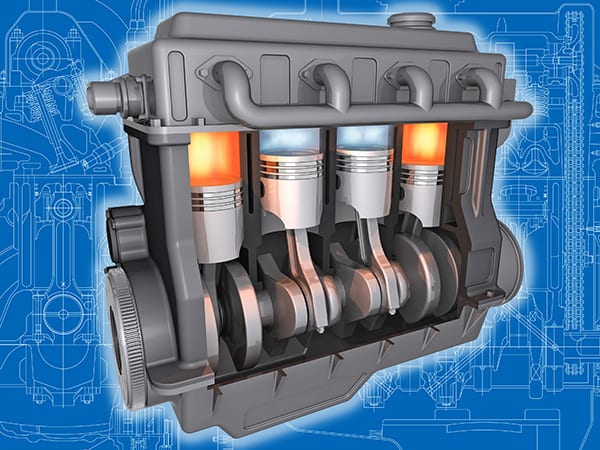 Hello, Reno! Did you know the Positive Crankcase Ventilation valve, PCV valve was first federally-mandated emissions control device? It was introduced for use on automobiles in the 1960’s. PCV Valves reduce harmful emissions and improve performance in vehicles. They represent the first legislation by the United States government to regulate harmful emissions.
Hello, Reno! Did you know the Positive Crankcase Ventilation valve, PCV valve was first federally-mandated emissions control device? It was introduced for use on automobiles in the 1960’s. PCV Valves reduce harmful emissions and improve performance in vehicles. They represent the first legislation by the United States government to regulate harmful emissions.
The PCV valve is located on the crankcase which is the lowest part of a vehicle’s engine. Housed in the crankcase are the crankshaft and engine oil. The crankshaft connects to the pistons which power the engine.
Pistons are pushed down when fuel is burned, causing the crankshaft to rotate. This sends power to the transmission. It ultimately turns to the axles which cause the vehicle to move. Some of the gasses released by the burning fuel are forced around the pistons and down into the crankcase.
If the escaped gasses mix with the engine oil in the crankcase, they form oil sludge. Sludge has the consistency of petroleum jelly and can clog up passageways in the engine resulting in engine damage. These escaped gasses can build up pressure within the crankcase, causing seals and gaskets to burst.
Prior to 1964, a hose attached to the crankcase was used to vent escaped gasses directly into the air. As well as their harmful emissions, the gasses are about 70% unburned fuel. The PCV valve’s design curbs harmful emissions and recaptures unburnt fuel.
The PCV valve is a small, one-way valve that allows escaped gasses to exit the crankcase. These gasses are routed into the intake system so they can be re-burned in the engine. A breather tube allows fresh air to enter the crankcase to facilitate circulation and keep the air in the crankcase clean.
Like most working parts on a vehicle, the PCV valve will wear out over time. Usually, the valve simply gets gummed up. Preventive maintenance, including routine oil changes at Wayne’s Automotive Center in Reno, will extend the life of the valve, but eventually, it will need to be replaced. A sticking PCV valve prevents gasses from circulating properly, which can increase pressure in the crankcase. Over time, the increased pressure will lead to oil leaks.Your vehicle manufacturer recommends that a PCV valve
Your vehicle manufacturer recommends that a PCV valve be replaced every 20,000 to 50,000 miles (32,000 to 80,000 kilometers), depending on the vehicle and Reno driving conditions. It’s an inexpensive repair but may not be included in the maintenance schedule in your owner’s manual. So if you’re looking for auto advice about the PCV valve, you may have to ask our pros at Wayne’s Automotive Center.
Taking care of our PCV valve protects the environment in Nevada and improves vehicle performance. It’s just part of good vehicle care for Reno drivers and a way all of us can do our part to improve the world we live in.

